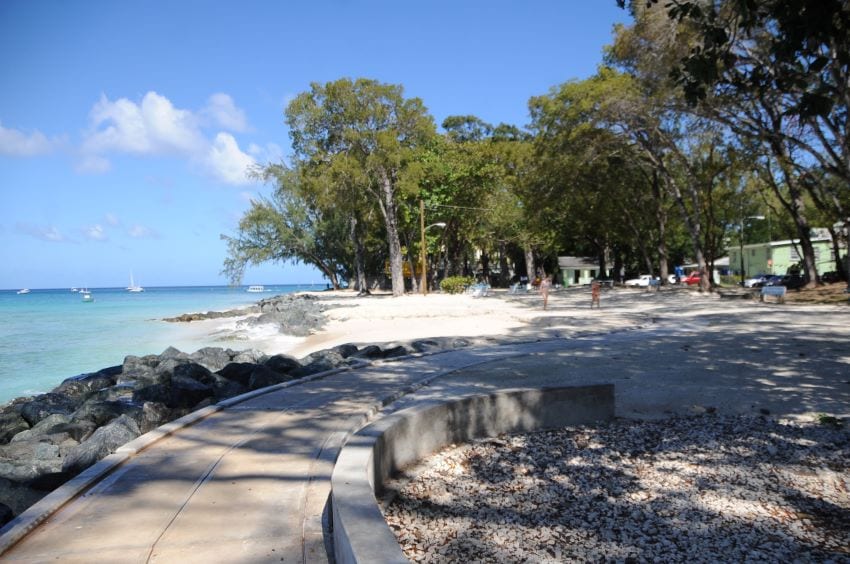
Rehabilitation and mitigation work done under the Holetown Waterfront Improvement Project, and executed by the Coastal Zone Management Unit (CZMU), has received the nod of approval from officials of the Inter-American Development Bank (IDB).
Director of the CZMU, Dr. Leo Brewster, and his team met recently with Chief of Operations at the IDB, Francisco Urra; Executive Vice-President, Bryan O’Neil; Country Representative, Juan Carros de la Hoz; and Chief Advisor, Jose Seligmann, in the Ministry of Environment and National Beautification’s conference room for a briefing on work carried out under the project.
The IDB provided US$30 million in funding to the Coastal Risk Assessment and Management Programme (CRMP), while Government provided the remaining US$12 million to facilitate the work conducted under the project, which started in 2011.
The CRMP was designed to conduct coastal risk assessments along the island’s coasts, while putting systems in place for its monitoring, management and institutional sustainability going forward.
Dr. Brewster noted that the CZMU had a longstanding relationship with the IDB, and continued to be “ecstatic with the funding and ability to break down boundaries with each project being a success”.
Project Manager of the CRMP, Ricardo Arthur, explained that the project was divided into three components, which focused on coastal risk assessment, monitoring and management; coastal infrastructure; and institutional sustainability.
He told the IDB officials that one of the major outputs of Component One was the LiDAR study, which created a high resolution digital elevation model of the entire island.
Mr. Arthur also noted that this digital elevation model had been used in several major projects over the years, including the IDB-funded road rehabilitation programme; the natural gas pipeline project; and the USAID-funded Holetown Drainage Study.
In addition, the outputs of the Nearshore Wave and the Circulation and Water Quality Studies provided key information, which would have contributed to the siting of the temporary outfall, and the South Coast Sewage fix.

Meanwhile, Coastal Information Systems Manager at the CZMU, Ramon Roach, explained that the National Coastal Risk Information and Planning Platform (NCRIPP) collate the information gathered under the CRMP as well as from several government agencies, and provided models for the impacts from seven types of hazards on building infrastructure.
“The NCRIPP is up and running…it is ready for operation,” he said. However, he noted that information gathered under the NCRRIP had to be carefully managed in a way that promotes investment in hazard resilient infrastructure with a clear understanding of the interpretation of the model outputs across the sectors.
“We need to move from exposure to what the risk is…. The NCRIPP can do investigations of various areas to show how hazards would affect a particular area,” he said, adding that the CZMU was now focused on looking at the potential economic impacts of hazards.
Deputy Project Manager of the CRMP, Allison Wiggins, also stated that the project allowed the unit to update the Integrated Coastal Zone Management Plan (1988 to 1999).
She added that the new plan would allow the CZMU to mainstream matters relating to disaster risk management and climate change within the vitally important coastal zone.
“We just signed a seven-month contract to come up with a new plan,” she said. The Deputy Project Manager also noted that they were seeking to do a review of the CZMU Act to include disaster risk reduction and climate change adaptation principles.
